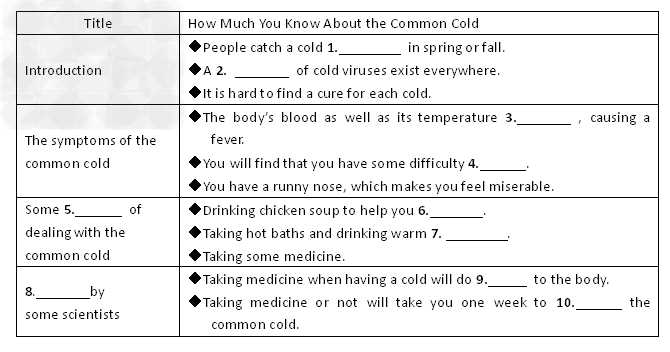阅读理解。
阅读下面短文,根据所读内容在答题卡相应番号后横线处填入恰当的单词(注意:每个空格只填一个单词)
It is easy for many people to catch a cold in the springtime or fall. It makes us wonder if scientists
can send a man to the moon, why can't they find a cure for the common cold? The answer is easy.
There are actually hundreds of kinds of cold viruses out there. You never know which one you will
get, so there isn't a cure for each one.
When a virus attacks your body, your body works hard to get rid of it. Blood rushes to your nose
and cause a block in it. You feel terrible because you can't breathe well, but your body is actually
eating the virus. Your temperature goes up and you get a fever, but the heat of your body is killing
the virus. You also have a runny nose to stop the virus from getting into your cells. You may feel very
uncomfortable, but actually your wonderful body is doing everything it can to kill the cold.
Different people do different things to deal with colds. In the United States and some other
countries, for example, people might eat chicken soup to make themselves feel better. Some people
take hot baths and drink warm liquids. Other people take medicine to stop various symptoms (症状)
of colds.
There is one interesting thing to note -some scientists say taking medicines when you have a cold
is actually bad for you. The virus stays in you longer because your body doesn't have a way to fight it
and kill it. Bodies can do an amazing job on their own. There is a joke, however, on taking medicine
when you have a cold. It goes like this:
It takes about one week to get over a cold if you don't take medicine, but it takes only seven days
to get over a cold if you take medicine.


